There May Be 3D In Your Car Before It's In Your Living Room

While 3D has been getting a big push from Hollywood and the video game and television set industries, consumers have not yet wholeheartedly embraced 3D when it comes to home tv. Stereo photos and videos can be visually stunning and emotionally evocative, but for many people 3D is a no-starter because current 3D tv requires using special glasses of one kind or another. It’s possible though, that consumer acceptance of 3D may come from an unexpected area, the automotive sector. While the technology for autostereoscopic, glasses-free, displays exists right now, there are cost, distance, and viewing angle issues that keep them from being currently applicable for home television sets. Those issues, however, may not exist for automotive applications. In fact, 3D technology is advancing so rapidly that cars may present particularly appropriate applications for the current state of the 3D art.
At the hardware end, there are inexpensive 3D ASICs (Application-Specific Integrated Circuit) and SOCs (System On a Chip) that can take the signal from a couple of CMOS sensors and deliver display ready 3D. Ambarella, a chip maker, and MasterImage 3D, a company that sells 3D projection systems to theater operators, both offer 3D hardware solutions that are easily implemented with off-the-shelf components. Ambarella’s chips are intended for use in the consumer camera market. Sony and Viewsonic have already introduced sub $250 3D pocket camcorders that have small autostereoscopic displays. Though there are competing technologies for autostereo displays, barrier parallax systems seem to be taking the lead.
In front of a normal LCD or similar display, a series of lines are spaced just far enough apart that when the LCD display below displays a combined image, your two eyes see two different images. Nintendo recently introduced the Nintendo 3DS portable game player with a parallax display that produces very nice 3D at arm’s length. Viewsonic and Aiptek are selling an 8″ 3D autostereo picture frame for less than $200. Now The Hollywood Reporter has published news that MasterImage is close to signing deals that would put their autostereo displays in cars and airliners. While MasterImage is initially pitching its 3D displays as augmenting passenger entertainment, they are also working with automakers on integrating 3D displays with existing and future features and options.
Though MasterImage’s theatrical business has been based on glasses based polarized 3D technology, and while they’ve seen that side of their business spread to 60 countries, growing over 300% in the past year, they agree that 3D systems for home television that use glasses are a dead end. For that reason they’ve patented their own technology for autostereoscopic displays. It’s a fairly elegant solution in that it takes a twist, if you will, on the basic technology behind liquid crystal displays. Instead of using physical stripes to make a parallax barrier like the Nintendo 3DS, which can sometimes be visible, MasterImage creates a barrier out of TN-LCD (Twisted Nematic Liquid Crystal Display) cells laid over a standard display. MasterImage claims that using LCD cells to create the parallax barrier results in a narrower barrier, simultaneously giving a brighter image, no cross talk, and a wider 3D viewing angle as well. It also allows for viewers outside the 3D viewing angle to see an acceptable 2D image, much as you would with a conventional video display. MasterImage’s system also can be easily switched between 2D and 3D and between normal and landscape displays.
MasterImage has patented both the TN-LCD parallax barrier and a manufacturing system that can integrate it with current TFT-LCD, PDP, and OLED displays. The first commercial application is on the Hitachi Wooo H001 mobile phone, which has a 854 X 480 pixel autostereo display. MasterImage says that other mobile phone and small display applications will be out later this year.
Last year the head of Samsung’s visual display unit, Boo-Keun Yoon, said that while autostereo displays would show up in phones and other small scale displays, it would be five or ten years before glasses-free 3D tv would work well enough (read: have a wide enough viewing angle) for home use. It should be noted that Samsung has a lot of money tied up in their current line of glasses based 3D televisions. You always want to sell what’s on the shelves or in the showrooms now, not what’s on the drawing boards. It should also be noted that since those original comments were made, Samsung Ventures has invested $15 million in MasterImage. The press release from MasterImage concerning that investment mentioned “mobile phones, tablets, PCs and movie theaters”, not television sets, perhaps to provide cover for Yoon’s earlier remarks as Samsung’s financial arm hedges its technological bets.
I had the opportunity to interview Roy Taylor, executive vice president of MasterImage 3D’s display unit about their automotive plans, their current state of the art and their future plans for 3D in cars and in your living rooms. Right now their largest display is about 15″, suitable for a laptop or small desktop computer display, though not big enough for a television set. They can get a 400 dpi display with good 3D up to 75 or 80 centimeters, about 30 inches, from the screen, with a 3D viewing angle up to 10 degrees from perpendicular. Taylor said that MasterImage thinks that 30 degrees from perpendicular is the minimum needed for a television set and that is achievable with their technology. He gave me a time frame of 3 years, with no breakthroughs needed, just incremental improvements. He agreed with me that when consumer can buy a glasses-free 3D tv set for $500-$800, 2D will quickly become like black & white. I’m old enough to remember when NBC and other tv networks started broadcasting in color.
While the current state of the art in 2011 might not work with a tv set across the room, it is almost perfectly suited for an instrument panel display screen or for passenger entertainment. Everyone sitting in the car can be within 30″ of a display panel and keeping the display within the + or – 10 degrees “sweet spot” shouldn’t be a problem either. Unlike in the living room, in a car, you know pretty much where the audience will be sitting.
Why have a 3D display in your car? To begin with, for the same reason MasterImage is negotiating with airlines, so passengers can watch 3D entertainment. The current size, viewing distance and angle are perfect for how LCD screens are currently installed in the dashboards and on the back of front seats of cars (or pop down from the headliner in the case of minivans).
There are potential applications of stereo imaging and displays, though, that are more valuable than just keeping the kiddies occupied with the latest 3D animated Disney flick.
The first thing that comes to mind is using 3D to help with parking. Right now backup cameras, like all 2D systems, have a difficult time conveying depth. Taylor acknowledged that a 3D backup camera would be easy to implement and an improvement over current 2D systems. Actually, MasterImage is working on something even more sophisticated than a 3D backup camera. Taylor wouldn’t identify the name of the European automaker that is working with them (well, actually he identified three European car companies interested in their technology but he asked me not to use their names), but one company wants to integrate its current parking assist camera system with a 3D display. They were developing a system that combines the view of four cameras, one at each corner of the car, into a single bird’s eye view, not unlike Infiniti’s Around View Monitor. While good in concept, in practice the aerial display has proved to be disorienting to some drivers. While it takes some recalibration of the 3D processing, Taylor said that incorporating 3D in the display has given the concept new life, the realistic perspective is much less disorienting and it’s now a more practical parking aid.
Even at the do-it-yourself hobbyist level, stereo imagery requires some post processing with software tools. The above mentioned 3D aerial view is just one example of what can be done with sophisticated software processing of stereo imaging. Continental just announced that it is adding a stereo camera system to its ContiGuard® forward looking braking and safety system. Adding a second camera gives the system much greater resolution and ability to identify objects and calculate distances than a single camera system. In this case the interaxial distance is hyperstereographic, or greater than the natural distance between two human eyes. The Continental system uses two cameras placed 20 cm apart, located behind the windshield. Normal orthographic stereo is based on ~65 mm interaxial distance, about the normal distance between most people’s eyes. While an extreme parallax of 200 mm would not look realistic on a 3D display, it probably allows for more accurate triangulation of distances.
Pedestrian identification, a 3D bird’s eye view and a 3D backup camera are only three possible applications of stereo image technology that could be valuable features to drivers. Since some navigation systems are already using 3D graphics (albeit in 2D formats) I can see nav systems going 3D as well. With all the aforementioned hype about 3D going on (there’s an ad for Samsung 3D televisions on my tv right now, the whole family in the ad is wearing 3D glasses), and with car companies’ current embrace of “infotainment”, each company trying to leapfrog Ford’s Sync/My Ford Touch system, I can see an autostereo 3D display showing up in your car before one shows up in your living room. If it does show up in your car, then for sure it will show up in your living room.
Ronnie Schreiber is almost but not quite a complete noob when it comes to 3D. That hasn’t kept him from recognizing a good idea whose time has come and he edits Cars In Depth, where you can find cool car culture stuff along with 3D photos and video.

Ronnie Schreiber edits Cars In Depth, the original 3D car site.
More by Ronnie Schreiber
Latest Car Reviews
Read moreLatest Product Reviews
Read moreRecent Comments
- Probert They already have hybrids, but these won't ever be them as they are built on the modular E-GMP skateboard.
- Justin You guys still looking for that sportbak? I just saw one on the Facebook marketplace in Arizona
- 28-Cars-Later I cannot remember what happens now, but there are whiteblocks in this period which develop a "tick" like sound which indicates they are toast (maybe head gasket?). Ten or so years ago I looked at an '03 or '04 S60 (I forget why) and I brought my Volvo indy along to tell me if it was worth my time - it ticked and that's when I learned this. This XC90 is probably worth about $300 as it sits, not kidding, and it will cost you conservatively $2500 for an engine swap (all the ones I see on car-part.com have north of 130K miles starting at $1,100 and that's not including freight to a shop, shop labor, other internals to do such as timing belt while engine out etc).
- 28-Cars-Later Ford reported it lost $132,000 for each of its 10,000 electric vehicles sold in the first quarter of 2024, according to CNN. The sales were down 20 percent from the first quarter of 2023 and would “drag down earnings for the company overall.”The losses include “hundreds of millions being spent on research and development of the next generation of EVs for Ford. Those investments are years away from paying off.” [if they ever are recouped] Ford is the only major carmaker breaking out EV numbers by themselves. But other marques likely suffer similar losses. https://www.zerohedge.com/political/fords-120000-loss-vehicle-shows-california-ev-goals-are-impossible Given these facts, how did Tesla ever produce anything in volume let alone profit?
- AZFelix Let's forego all of this dilly-dallying with autonomous cars and cut right to the chase and the only real solution.





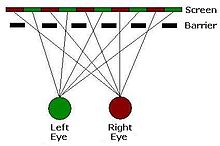















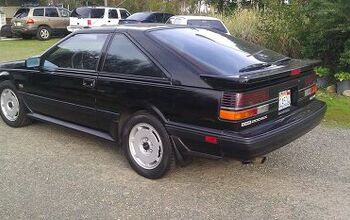




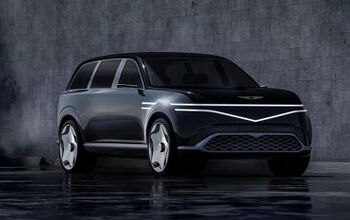

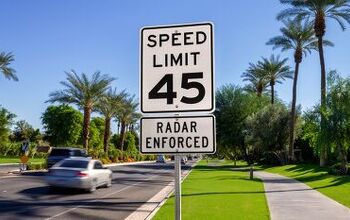


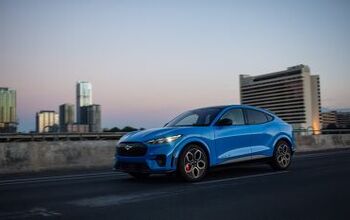
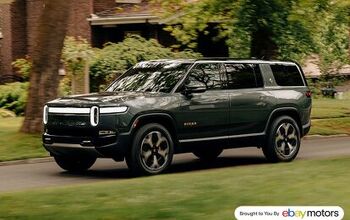



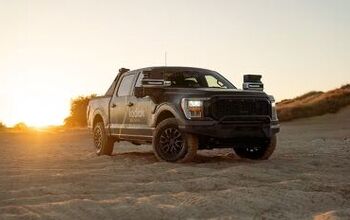

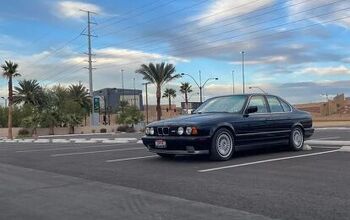
Comments
Join the conversation
Count Floyd's Monster Chiller Horror Theater had the best 3D's of all time: "Dr. Tongue's 3D House of Stewardesses" www.youtube.com/watch?v=87WgmGHz9U4 Unfortunately, I still see 3D as a not much better gimmick. I have better things to spend money on.....
I'm just wondering how many people who dismiss 3D out of hand have actually experienced 3D beyond cheap red/cyan glasses. I've only been playing around with it for about 6 months and have found that 3D photos are more evocative of memory than the same image in 2D. You see the shape of the space you were in, you can identify faces in the background that you can't in 2D. Your brain has twice the amount of information to work with. I'm not saying all this as someone with a small financial interest in 3D, I'm saying it as someone who shot his son's wedding in 3D and saw my ex's jaw drop and her exclaim "wow!" while watching some of the stereo video. Hollywood, the television industry and the video game industry may see 3D as the latest gimmick to get you to buy tickets, DVDs, and new tv sets. That doesn't change the fact that in real life, our eyes and brains work in 3D. Actually what I find surprising about 3D is the fact that people make a big deal out of being able to see pictures and video in stereo when that's how we normally look at the world. Yes, some people can't see 3D. Some people are color blind but that didn't stop the commercial development of color film and video.